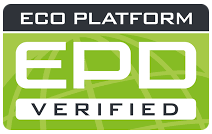Indowud nfc is a GreenPro
certified product and adds merit to projects with Green Rating
Module : Building Materials and Resources
Credit : BMR1 – Sustainable Building Materials
Compliance : Materials with recycled content
- Recycled materials with upto 10% of overall component – 1 point
- Recycled materials with upto 20% of overall component – 2 points
- Additional 1 point (Exemplary performance) for over 20%Indowud Edge
- Indowud has over 30% of recycled content
3/5
Module : Building Materials and Resources
Credit : BMR1 – Sustainable Building Materials
Compliance : Wood based material with FSC certification and/or rapidly renewable (Within 5 years)
- Materials upto 50% used – 1 point
- Materials upto 75% used – 2 points
- Additional 1 point (Exemplary performance) for over 95%
Indowud Edge
- Does not require FSC certification as it is a zero wood product
- Since the primary raw material is agri-residues, which is a rapidly cultivated can help awarding of points
POINTS : 3
3/5
Module : Building Materials and Resources
Credit : BMR1 – Sustainable Building Materials
Compliance : Local Materials – Sourcing of materials within 400Kms
- Upto 20% of materials – 1 point
- Upto 40% of materials – 2 points
- Additional 1 point (Exemplary performance) for over 60%
Indowud Edge
- Projects within 400Km radius from its factory in Chennai
POINTS : 3
3/5
Module : Building Materials and Resources
Credit : BMR4 – Sustainable Building Materials
Compliance : Use of Certified Green Building Materials
- Using GreenPro certified products, each product would give 1 points with a maximum of 5 points
Indowud Edge
- Green Pro Certified
POINTS : 1
1/5
Module : Indoor environmental Quality
Credit : IEQ 5 – Low emitting Materials
Compliance : Composite wood with no urea formaldehyde
Indowud Edge
- No Urea Formaldehyde
- No Formaldehyde emissions
- No VOC emissions
POINTS : 1
1/5

An Environmental Product Declaration (EPD) is a Type III environmental declaration that quantifies environmental information about the life cycle of a product. It is generally done to understand the environmental impact of the product and demonstrate a commitment to limiting environmental impacts.
